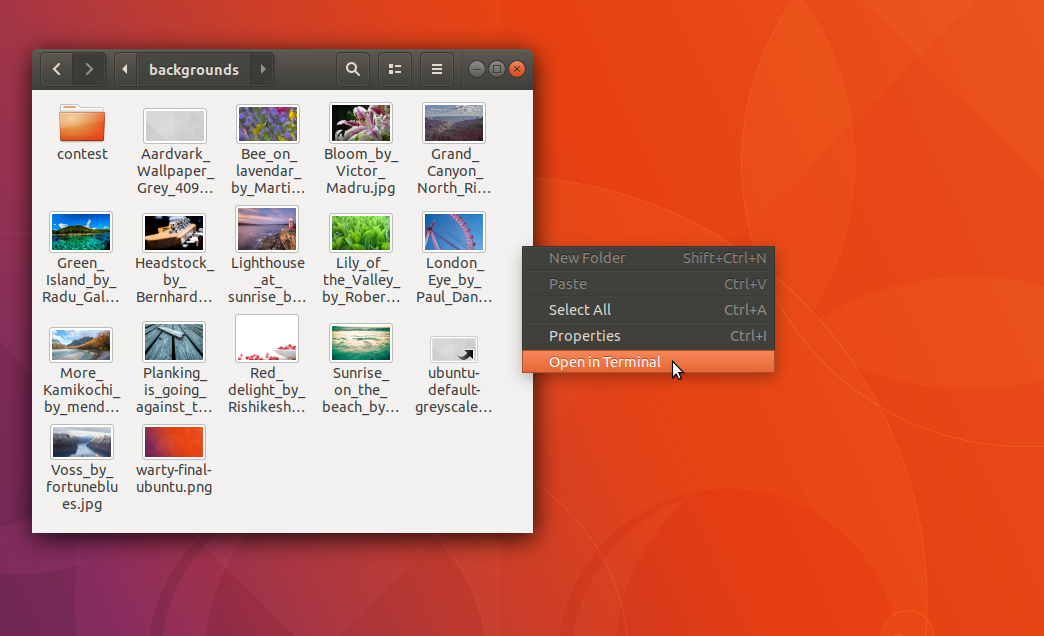This feature is not available in the Educational edition of PyCharm.

Click on the Terminal icon in the top menu bar (or choose Menu Accessories Terminal). A window opens with a black background and some green and blue text. You will see the command prompt. Another great thing about the app is that it is fully open-sourced, so anyone can contribute. It is available on GitHub. When installed, Windows Terminal adds a context menu command, Open in Windows Terminal, to the right-click of File Explorer. You can use it to open the app directly to the specific location. GNOME (generic) until Xenial (16.04): gvfs-open file2open.xxx. Starting with Artful (17.10): gio open file2open.xxx. ( xxx = some file extension). With this command the default app for xxx will be invoked (for example evince if you want to open PDF).
PyCharm includes an embedded terminal emulator for working with your command-line shell from inside the IDE. Use it to run Git commands, set file permissions, and perform other command-line tasks without switching to a dedicated terminal application.
Initially, the terminal emulator runs with your default system shell, but it supports many other shells such as Windows PowerShell, Command Prompt cmd.exe, sh, bash, zsh, csh, and so on. For information about changing the shell, see Configure the terminal emulator.
Open the Terminal tool window
Select View | Tool Windows | Terminal from the main menu or press Alt+F12.
Right-click a project item in the Project tool window and choose Open in terminal from the context menu. This way the terminal will start with the directory corresponding to the selected item.
Start a new session

Click on the toolbar to start a new session in a separate tab.
Nemo Open In Terminal
To run multiple sessions inside a tab, right-click the tab and select Split Vertically or Split Horizontally in the context menu.
The Terminal saves tabs and sessions when you close the project or PyCharm. It preserves tab names, the current working directory, and even the shell history.
To close a tab, click on the Terminal toolbar or right-click the tab and select Close Tab from the context menu.
Press Alt+Right and Alt+Left to switch between active tabs. Alternatively, you can press Alt+Down to see the list of all terminal tabs.
To rename a tab, right-click the tab and select Rename Session from the context menu.

To search for a certain string in a Terminal session, press Ctrl+F. This searches all text in the session: the prompt, commands, and output.
Configure the terminal emulator
In the Settings/Preferences dialog Ctrl+Alt+S, select Tools | Terminal.
Specify the desired shell to use with the embedded terminal emulator, change the start directory, and define environment variables among other settings.
PyCharm should automatically detect the default shell based on your environment. Here are some of the possible shells you might consider:
The embedded terminal emulator also inherits the following IDE settings:
:max_bytes(150000):strip_icc()/ubuntu-terminal-hotkey-34041f7fd039468dabf56a54fa801664.jpg)
Open In Terminal Nautilus
On the Keymap page, you can configure the copy Ctrl+C and paste Ctrl+V shortcuts.
On the Editor | General | Appearance page, you can configure blinking frequency for the caret. The Terminal does not inherit the Use block caret option because it always renders the caret as a block.
On the Editor | Color Scheme | Console Font page, you can configure line spacing and fonts.
On the Editor | Color Scheme | Console Colors page, you can configure font colors.
On the Editor | Color Scheme | General page, you can configure the selection foreground and background colors.

